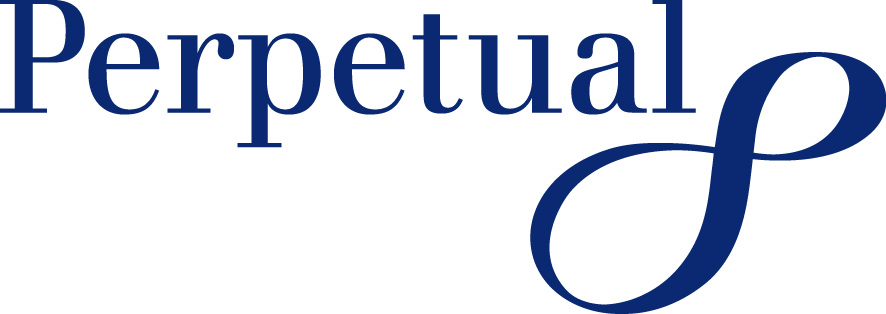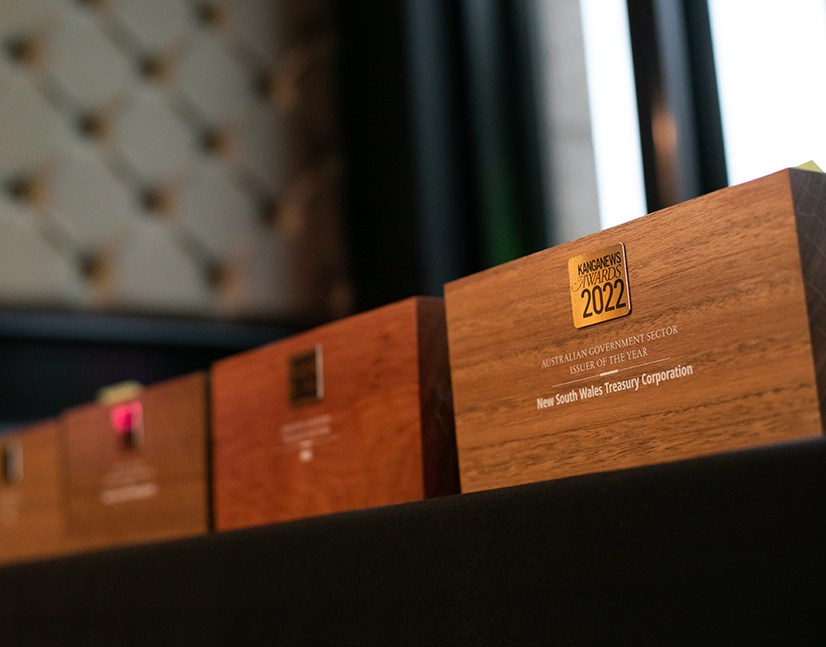
The diversity dividend across a market workforce
Providing a safe and inclusive workplace is a key pillar of Perpetual’s objective to create lasting prosperity for its clients, people, communities and the environment. Recognised as an employer of choice for gender equality by the Workplace Gender Equality Agency (WGEA) each year since 2018, valuing its employees’ unique backgrounds and experiences is key to meeting Perpetual’s goals. Three emerging leaders from Perpetual’s corporate-trust division share their experiences within the firm and capital market as a whole.
DIVERSITY AND INCLUSION AS A STRATEGY
Perpetual’s annual reports identify the risk arising from an inability to attract, engage and retain quality and appropriate people to execute its business strategy as a major business risk. The company names its diversity and inclusion (D&I) policy a key risk mitigant. In a 2021 employee survey, 94 per cent of Perpetual’s employees said they regard their working environment as inclusive and accepting of diverse views and individual differences.
At its 2021 annual general meeting in September 2021, Perpetual launched a new D&I strategy which includes the creation of seven employee-led subcommittees within its diversity council, ensuring its workplace is fully inclusive.
In the firm’s diversity statement to the Perpetual-sponsored Future IM/ Pact initiative – which aims to attract more diverse talent into the investment teams of Australia’s leading super funds and fund managers – Rob Adams, Perpetual’s Sydney-based chief executive and managing director, writes: “Not only is D&I essential for our bottom line, it helps us better manage risks and ultimately delivers value to our shareholders.”
A mainstay of this approach is to employ strategies to increase female representation in teams where it is typically lower. Marion Gowing, Sydney-based senior transaction manager, notes the extent to which Perpetual Corporate Trust operates within a wider industry that needs to improve gender balance, thereby placing greater significance on the diversity initiatives of her employer. She comments: “On a day-to-day basis most of my contacts are male and the reality is it is a very male-oriented industry. The question therefore becomes how to encourage more women into the industry.”
Karen Roach, business analyst at Perpetual Digital in Sydney, was a key member of the team working on the project to upgrade Australian data warehouse ABSPerpetual’s reporting of asset-backed securities data to the Reserve Bank of Australia and investment communities. She started work as a personal assistant and – from this starting position – acknowledges the strength of the investment Perpetual makes in upskilling its employees, aiming to improve gender balance across teams.
She says: “I am lucky that I was given the opportunity to move into the role I have now. If people at Perpetual show aptitude, irrespective of qualifications, they are provided with the opportunity to see whether something works. This approach was key in getting me to where I am today.”
Mimi Bui, Sydney-based senior agency and trustee manager at Perpetual Corporate Trust, says a key leadership motivation – and one she has adopted in her own management approach – is to recognise that every employee is different irrespective of gender. “There is no one-size-fits-all approach when it comes to developing people,” she says. “It is important to understand that everybody needs to move at their own pace and for managers to learn the nuances of individuals’ core values and to tap into these – thereby bringing out their best.”
According to Perpetual’s 2021 sustainability report, a gender-balanced leadership team and workforce is better equipped to deliver improved business outcomes. The firm advocates for greater gender diversity in boardrooms and its sustainability report states: “This commitment is reflected in our own target that by 2024, we will have a 40 per cent gender representation on our boards.”
Perpetual is close to meeting its target. At September 2021, women comprised 36 per cent of the senior leader cohort across its global businesses. The firm places 64th in the ASX300 for gender balance
in executive leadership teams in the Chief Executive Women senior executive census 2021 (see table). The census has reported annually on the performance of companies for the past five years, collecting evidence to measure progress of the extent to which the nation’s top public companies use the leadership talent available to them and to identify scope for improvement.
To create a pipeline of women who are ready to move into more senior roles, Perpetual has put targets in place to increase the representation of women in positions such as investment management and financial advice, where it acknowledges balanced gender representation continues to be a challenge for the financial-services industry.
Gowing notes that Perpetual has made a commitment to equal pay bolstered by a 40-40-20 target of male-female representation across employment levels. “I think it is important to make known that Perpetual is demonstrating this commitment from the top down,” she comments.
Chief executive women senior executive census 2021: gender balance in executive leadership teams (ASX300 ranking)
| TARGET SETTING |
SIZE OF | TOTAL NO. OF WOMEN | % IN ELT 2017 | % IN ELT 2018 | % IN ELT 2019 | % IN ELT 2020 | % IN ELT 2021 | |
|---|---|---|---|---|---|---|---|---|
| 2021 Chief Executie Women Census | 40:40 or above | 8th | 3rd | 43rd | 50th | 29th | 29th | 38th |
SOURCE: Chief Executive Women senior executive census 2021
RECRUITING, KEEPING – AND FINDING – TALENT
Gowing also emphasises the importance of finding and retaining talent. “It is important to offer additional opportunities to existing employees,” she says. “Developing roles by offering internal and external training, and formal and informal mentoring is key. As is encouraging talent into the company regardless of gender, in partnership with industry bodies such as the ASF [Australian Securitisation Forum].”
At Perpetual, ongoing professional development and mentoring for female talent are key pillars in safeguarding a gender-balanced talent pipeline across the business.
The company has put in place recruitment and talent-development programmes to accelerate progress. It is involved in a wide range of initiatives to attract more women into roles. In addition to committing to the Future IM/Pact and Workplace Gender Equality Agency (WGEA) goals, other initiatives include Women in Banking and Finance’s mentoring for success programme, which develops future female leaders. Perpetual has participated in this programme for almost a decade, which sends women to be mentored by senior industry leaders. Perpetual nominated 17 women to be part of this programme in 2021.
These opportunities should not be aimed solely at women, according to Gowing, who points to the importance of a truly gender-balanced team for an optimal working environment. “It is just as important to encourage men to take up these opportunities as well as for there to be male and female role models within the company,” she says. “Encouraging talent to stay is all about offering additional opportunities through training, education and mentoring as well as open and honest conversation.”
Women need mentors and role models to demonstrate that C-suite level positions are attainable. According to Roach: “There have been some very high-level executives involved in my area. A solution could be to get some high-level executives in to schools to get girls thinking early about careers that are traditionally male, to debunk myths society perpetuates that banking and financial services is a male industry.”
For Bui, this needs to occur sooner rather than later. “We need to start in high school and university, at the stage where girls are still making up their minds about career paths. If they are able to tap into mentoring it makes the decision-making process easier.”
She continues: “I look forward to be a mentor for Life Changer, a mentoring programme being rolled out in Victoria and New South Wales, and a Perpetual Giving partner. It focuses on high-school children during their impressionable years, some of whom may be struggling with various life issues. It is important women within the finance industry participate in these kinds of programmes. We need to reach out to the next generation.”
Gowing is a member of the ASF’s Future Leaders and Young Professionals (FLYP) subcommittee, which aims to provide emerging leaders in the securitisation market opportunities to broaden awareness of the industry. “People on the FLYP subcommittee visit universities to talk about securitisation, which is so important to bring awareness to the market,” she comments.
GOING THE EXTRA MILE ON FLEXIBILITY
Perpetual’s diversity council measures the appropriateness of flexible work arrangements. Adams, the council chair, says 93 per cent of Perpetual employees believe they have the flexibility needed to manage work and caring responsibility.
For Gowing, encouraging women into the industry is very much about flexibility. “It is about demonstrating that a company has appropriate policies in place on flexibility and diversity, as well as ensuring an inclusive culture through the whole company.”
Bui highlights Perpetual’s willingness to go the extra mile on flexibility. She says: “Nothing is more evident from the last 18 months against the backdrop of COVID-19 and working from home, especially for women who, more often than not, take on more than an equal share of family life. The level of flexibility we are being provided with is evident in the output and productivity in my team and others.”
Having the flexibility to help employees juggle competing priorities is essential, Gowing adds. “Perpetual has definitely embraced this flexibility,” she comments. “Technology in the digital age has helped. A robust flexibility policy has been in place for a while now and was enhanced as a result of what has happened in the last couple of years.”
Perpetual continues to review its parental-leave policy, which has recently incorporated the introduction of a return- to-work programme.

WOMEN IN CAPITAL MARKETS Yearbook 2023
KangaNews's annual yearbook amplifying female voices in the Australian capital market.










